
Banská Bystrica: A Gem in Slovakia's Heartland
Discover Banská Bystrica, Slovakia's historical and natural treasure, offering a blend of medieval charm, vibrant culture, and stunning natural landscapes.
Banská Bystrica, nestled in central Slovakia, is a city that beautifully melds history with nature. Once a thriving mining hub, it boasts a rich heritage that dates back to medieval times. The historical center is a delight for visitors, with its well-preserved buildings and charming streets. The SNP Square, or Slovak National Uprising Square, stands as the heart of the city, surrounded by vibrant cafes, restaurants, and shops. The square also hosts various events throughout the year, making it a lively spot for locals and tourists alike. The city is also a gateway to the Low Tatras and the Veľká Fatra mountain range, offering ample opportunities for outdoor enthusiasts. Hiking, skiing, and exploring the scenic countryside are just a few activities that await. Visitors can venture into the nearby National Parks for breathtaking views and tranquil landscapes. Banská Bystrica's location makes it an ideal base for those looking to experience both cultural and natural attractions. Culture and history aficionados will appreciate the numerous museums and galleries in the city. The Central Slovakian Gallery and the Museum of the Slovak National Uprising provide deep insights into the region's past and artistic heritage. The city’s architecture, marked by its Gothic, Renaissance, and Baroque influences, tells a story of its own, with landmarks such as the Church of the Assumption and the City Castle standing as testaments to its storied past.
Local tips in Banská Bystrica
- Visit SNP Square early in the morning to enjoy the calm atmosphere before it gets busy.
- Take a guided tour of the Museum of the Slovak National Uprising to fully appreciate its significance.
- Bring comfortable shoes for walking; the city's cobblestone streets can be tricky.
- Try local Slovak cuisine at one of the traditional restaurants around SNP Square.
- If visiting in winter, plan a trip to the nearby ski resorts for some fantastic skiing.
- Check the local event calendar as Banská Bystrica often hosts cultural festivals and markets.
- Use public transport to explore the surrounding national parks for a hassle-free experience.
Banská Bystrica: A Gem in Slovakia's Heartland
Banská Bystrica, nestled in central Slovakia, is a city that beautifully melds history with nature. Once a thriving mining hub, it boasts a rich heritage that dates back to medieval times. The historical center is a delight for visitors, with its well-preserved buildings and charming streets. The SNP Square, or Slovak National Uprising Square, stands as the heart of the city, surrounded by vibrant cafes, restaurants, and shops. The square also hosts various events throughout the year, making it a lively spot for locals and tourists alike. The city is also a gateway to the Low Tatras and the Veľká Fatra mountain range, offering ample opportunities for outdoor enthusiasts. Hiking, skiing, and exploring the scenic countryside are just a few activities that await. Visitors can venture into the nearby National Parks for breathtaking views and tranquil landscapes. Banská Bystrica's location makes it an ideal base for those looking to experience both cultural and natural attractions. Culture and history aficionados will appreciate the numerous museums and galleries in the city. The Central Slovakian Gallery and the Museum of the Slovak National Uprising provide deep insights into the region's past and artistic heritage. The city’s architecture, marked by its Gothic, Renaissance, and Baroque influences, tells a story of its own, with landmarks such as the Church of the Assumption and the City Castle standing as testaments to its storied past.
When is the best time to go to Banská Bystrica?
Iconic landmarks you can’t miss
Europa SC
Explore Europa SC in Banská Bystrica for the ultimate shopping, dining, and entertainment experience under one roof.
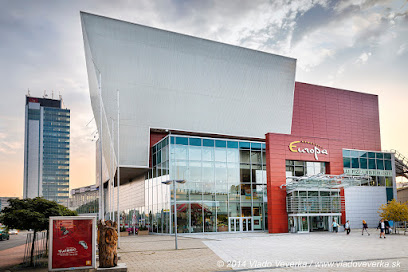
Museum of the Slovak National Uprising
Explore the poignant history of Slovakia's fight for freedom at the Museum of the Slovak National Uprising in Banská Bystrica.
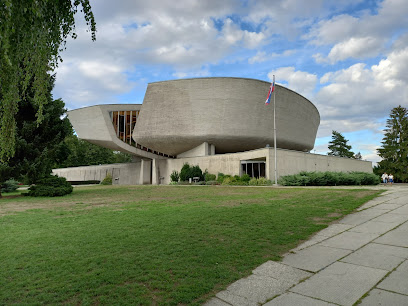
Bystrická Klubovňa
Discover the authentic taste of Slovakia at Bystrická Klubovňa, a premier brewpub in Banská Bystrica offering local brews and delicious cuisine.
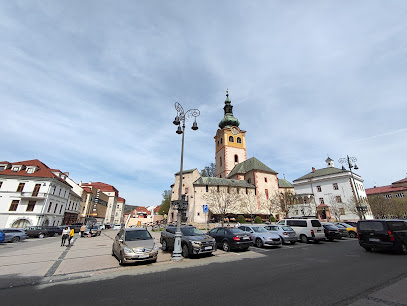
Ski Králiky
Discover Ski Králiky, Slovakia's winter paradise with stunning slopes, exciting activities, and authentic Slovakian cuisine for an unforgettable experience.
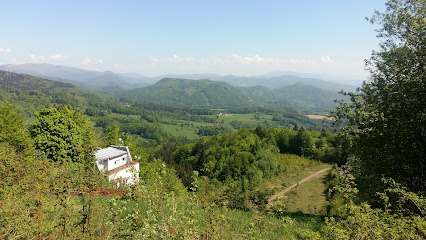
Harmanecká cave
Explore the enchanting Harmanecká Cave, a natural wonder filled with breathtaking stalactites and a rich history of geological marvels.

Ski resort Šachtičky
Discover the ultimate skiing destination at Ski Resort Šachtičky, where adventure meets stunning mountain vistas and family-friendly fun awaits.

Park under the SNP Museum
Explore the tranquil Park under the SNP Museum in Banská Bystrica, a perfect blend of nature and history for every traveler.
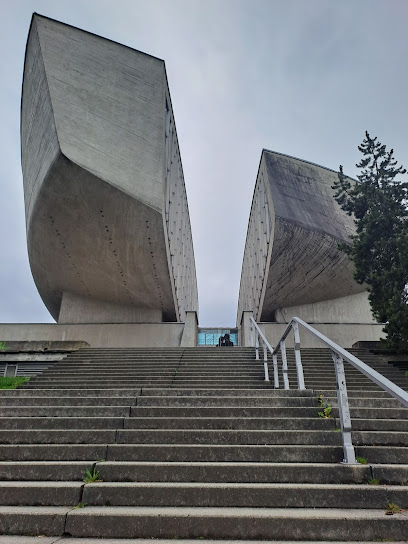
Červený Rak
Experience the heart of Slovak cuisine at Červený Rak in Banská Bystrica, where traditional flavors meet modern dining in a welcoming ambiance.
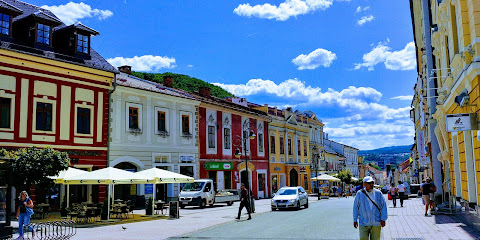
Banska Bystrica Castle
Discover the historical charm and breathtaking views of Banska Bystrica Castle, a must-visit tourist attraction in Slovakia.
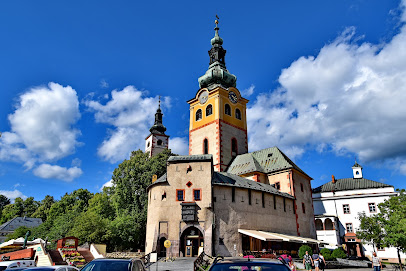
Hotel – Penzión Kúria
Experience comfort and local charm at Penzíon Kúria, your perfect guest house in Banská Bystrica, Slovakia.

Hotel Národný Dom
Discover the warmth of Slovak hospitality at Hotel Národný Dom, your perfect base in Banská Bystrica's vibrant cultural landscape.

Black Coffee
Discover the vibrant atmosphere of Black Coffee in Banská Bystrica, where exceptional coffee meets delicious baked goods in a cozy setting.
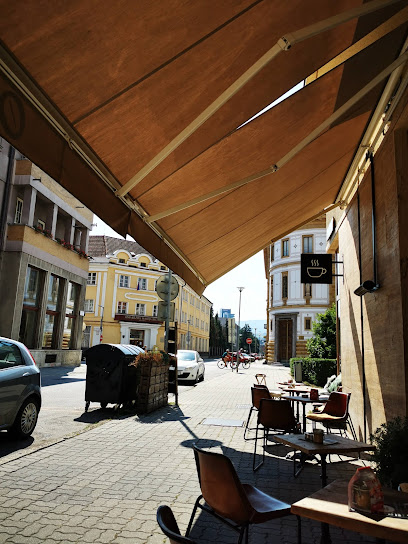
Kút 12 reštaurácia
Experience authentic Slovak cuisine at Kút 12 Restaurant in Banská Bystrica, where tradition meets taste in a cozy dining setting.
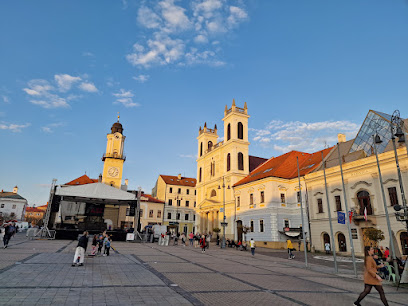
Kaviareň Poetika
Discover Banská Bystrica's cultural gem, Kaviareň Poetika: where artisanal coffee meets artistic inspiration.
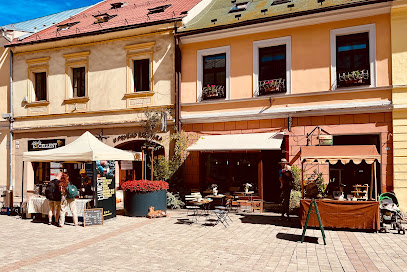
GRAN hostel
Experience the charm of Banská Bystrica from GRAN Hostel, your cozy and budget-friendly base for exploring Slovakia's rich history and culture.
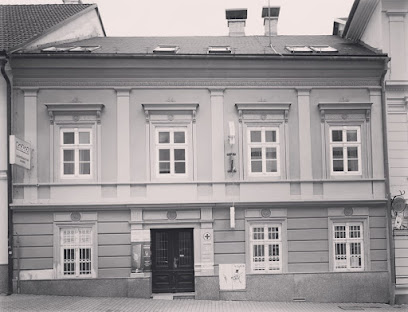
Unmissable attractions to see
Castle of Spirits (Bojnice Castle)
Explore Bojnice Castle, a historical gem in Slovakia, blending stunning architecture with rich cultural heritage amidst enchanting landscapes.
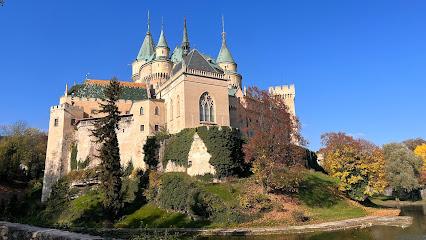
Jasna Low Tatras
Explore the breathtaking landscapes and year-round adventures at Jasna Low Tatras, Slovakia's top destination for skiing, hiking, and outdoor fun.
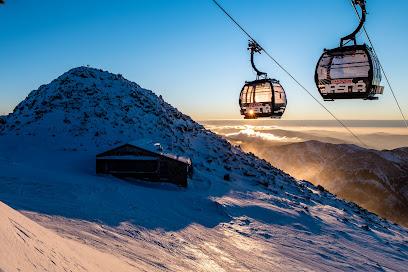
Museum of the Slovak National Uprising
Delve into Slovakia's rich history at the Museum of the Slovak National Uprising, where courage and resilience come to life through powerful exhibits.

Slovak Mining Museum - Mining Museum in Nature
Discover the rich mining heritage of Slovakia at the Slovak Mining Museum in Banská Štiavnica, where history comes alive amidst beautiful nature.
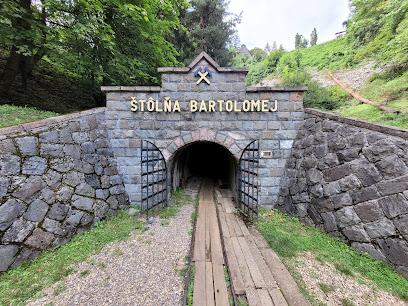
Park under the SNP Museum
Discover the tranquility of the Park under the SNP Museum, a cultural oasis in Banská Bystrica, perfect for relaxation and reflection amidst nature.
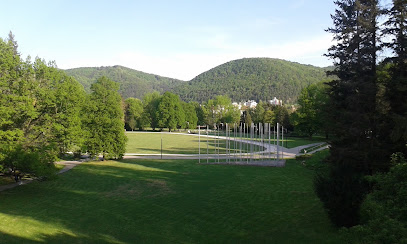
Banska Bystrica Castle
Discover the historical Banska Bystrica Castle, a stunning blend of Gothic and Renaissance architecture in the heart of Slovakia.
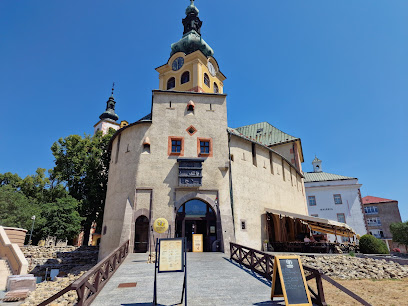
Mestský park Banská Bystrica
Discover tranquility in the heart of Banská Bystrica at Mestský park, a beautiful urban oasis featuring lush greenery and scenic pathways.
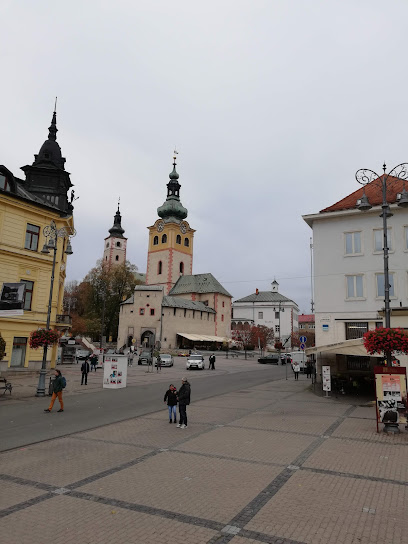
The Old Castle in Banská Štiavnica
Explore the Old Castle in Banská Štiavnica, a historical museum offering breathtaking views and rich insights into Slovakia's medieval heritage.
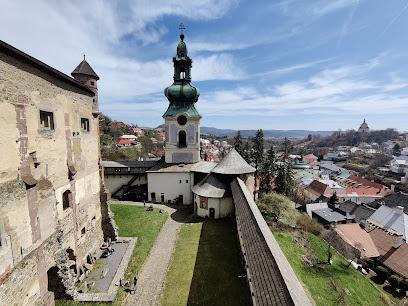
Hodinová veža
Explore the historic Hodinová veža, a stunning clock tower in Banská Bystrica, and experience breathtaking views and rich heritage.
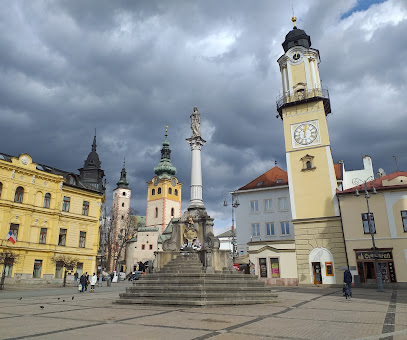
St Francis Xavier Cathedral
Explore the stunning St. Francis Xavier Cathedral in Banská Bystrica, a masterpiece of baroque architecture and a hub of cultural heritage.
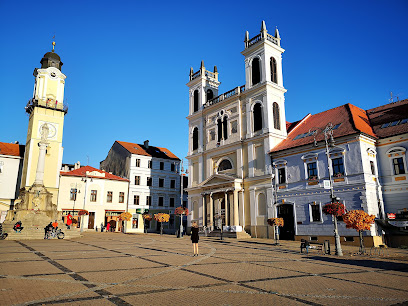
Lavička nad Sásovou
Explore the breathtaking views and serene atmosphere at Lavička nad Sásovou, a hidden gem in Banská Bystrica, Slovakia.

Central Slovak Museum
Explore Slovakia's rich cultural tapestry at the Central Slovak Museum in Banská Bystrica, a treasure trove of history and art.
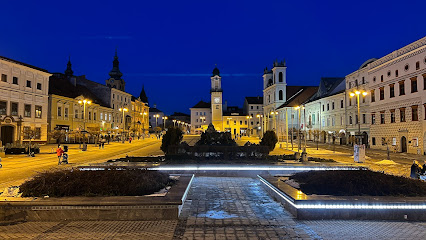
Stredoslovenská galéria - Stála expozícia Dominika Skuteckého
Explore the Stredoslovenská galéria in Banská Bystrica for an enriching experience of Slovak art, featuring works by Dominik Skutecký and more.
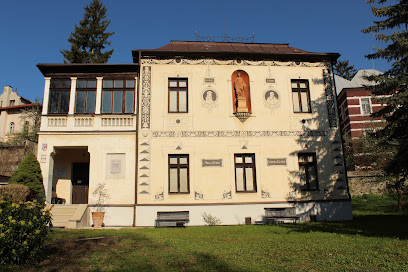
Lavička Lásky Poniky
Discover the romantic allure of the Love Bench in Poniky, a picturesque spot surrounded by nature, perfect for couples and nature lovers.
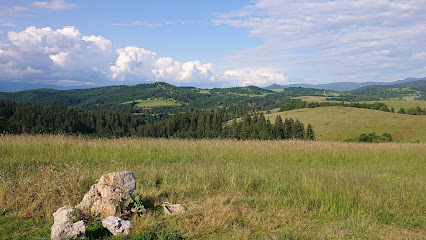
Suchý vrch lyžiarsky vlek
Experience the thrill of winter sports at Suchý vrch Ski Resort in Banská Bystrica, a haven for skiers and nature enthusiasts alike.

Essential places to dine
Koliba U sv. Krištofa
Experience authentic Slovak cuisine at Koliba U sv. Krištofa, where tradition meets taste in Banská Bystrica's charming atmosphere.
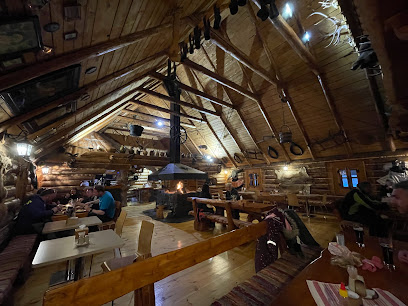
Bystrická Klubovňa
Discover Banská Bystrica's vibrant brewpub scene at Bystrická Klubovňa - where local flavors meet friendly atmosphere.

STREET FOODIE BANSKÁ BYSTRICA
Experience the vibrant culinary scene at Street Foodie Banská Bystrica, where delicious street food meets an inviting atmosphere.
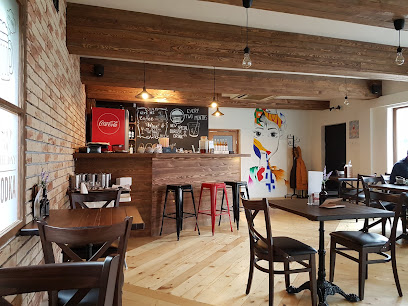
Pizzeria EVIJO
Experience authentic Italian flavors at Pizzeria EVIJO in Banská Bystrica – where every bite transports you to Italy.
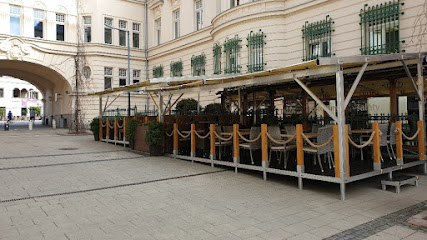
Bernardov Dvor
Experience authentic Slovak cuisine at Bernardov Dvor in Banská Bystrica - where tradition meets taste in a cozy setting.
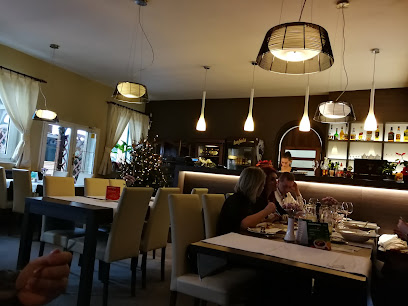
Cartel Coffee Bar & Kitchen
Experience culinary delight at Cartel Coffee Bar & Kitchen in Banská Bystrica – where gourmet food meets artisanal coffee in a vibrant setting.
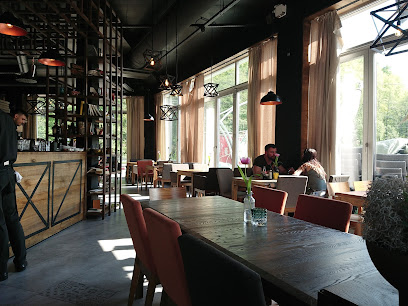
MAMMA MIA STEAK
Experience exquisite dining at Mamma Mia Steak in Banská Bystrica – where quality meets flavor in every bite.
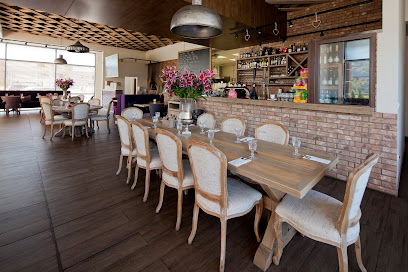
Reštaurácia u Richtára
Experience authentic Slovak cuisine in Banská Bystrica at Reštaurácia u Richtára - where tradition meets taste.
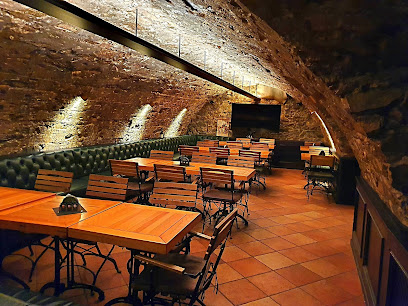
Samurai Sushi
Indulge in authentic Japanese flavors at Samurai Sushi in Banská Bystrica – where culinary artistry meets exquisite taste.
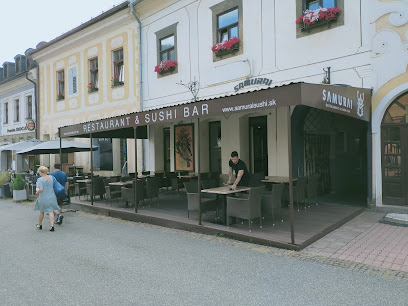
Bašta restaurant
Discover the flavors of Slovakia at Bašta Restaurant in Banská Bystrica – where tradition meets taste in every dish.
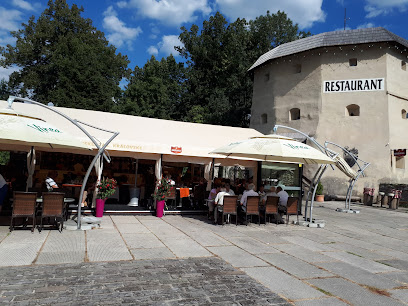
Chilli Pizzéria Ristorante
Experience authentic Italian flavors at Chilli Pizzéria Ristorante in Banská Bystrica – where every slice tells a story.
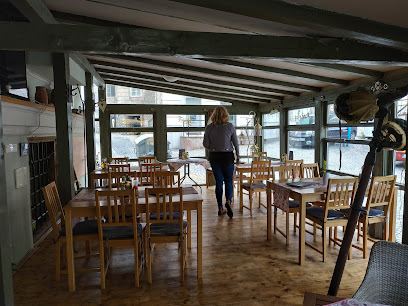
Červený Rak
Experience authentic Slovak cuisine at Červený Rak in Banská Bystrica—where tradition meets taste.

Davaj Het - Bystrický lokál
Discover authentic Slovak flavors at Davaj Het in Banská Bystrica - where tradition meets modern culinary art.
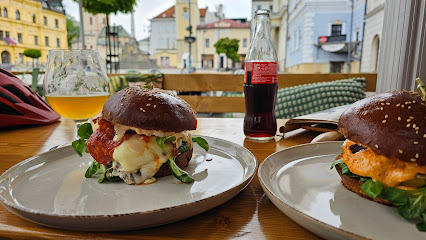
Frais restaurant, coctails, vine
Experience exquisite flavors and delightful cocktails at Frais Restaurant in Banská Bystrica - where local meets global cuisine.

Bufet Záhradky
Experience authentic Slovak cuisine at Bufet Záhradky in Banská Bystrica - where tradition meets flavor in a cozy setting.
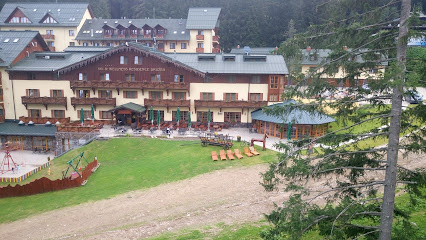
Markets, malls and hidden boutiques
Europa SC
Explore Europa SC: Banská Bystrica's premier shopping mall with a wide array of shops, dining, and entertainment options for the ultimate experience.
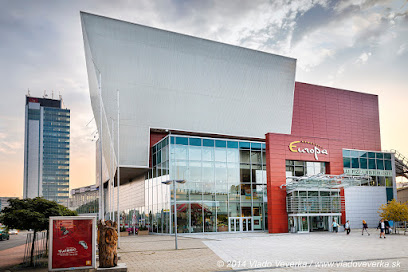
Decathlon Banská Bystrica
Explore Decathlon Banská Bystrica for top-notch sporting goods and apparel, perfect for every athlete and outdoor enthusiast.

Markíza Moda Italiana
Explore the latest trends and timeless styles at Markíza Moda Italiana, the premier women's clothing store in Banská Bystrica, Slovakia.
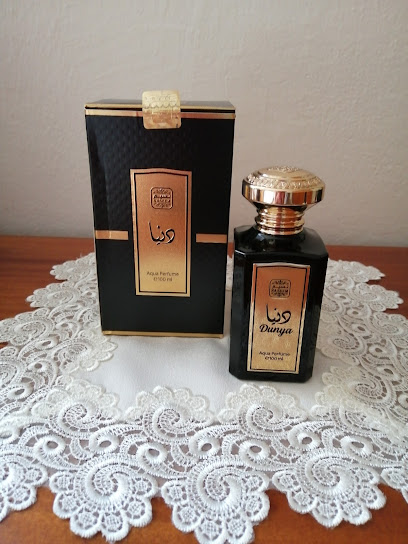
iHRYsko.sk Banská Bystrica
Explore iHRYsko.sk in Banská Bystrica for unique gifts, toys, and games that capture the essence of Slovak culture and craftsmanship.
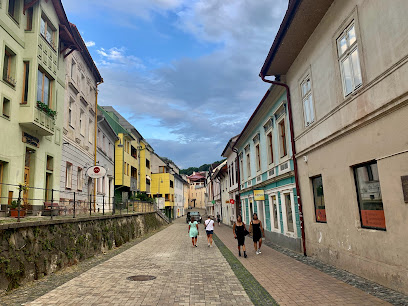
Army shop BB
Discover an extensive range of tactical gear and military supplies at Army Shop BB in Banská Bystrica, perfect for adventurers and enthusiasts.
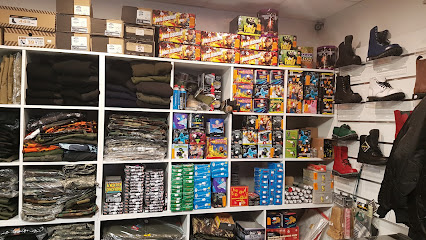
MUSIC SHOP s.r.o.
Explore a wide range of musical instruments and accessories at MUSIC SHOP s.r.o. in Banská Bystrica, a paradise for music lovers.
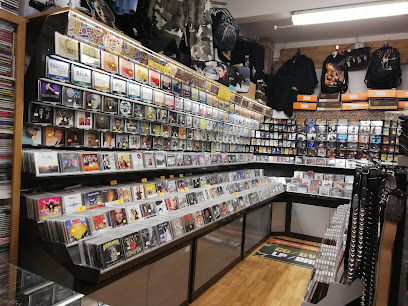
Yellow Tree
Explore the charm of Yellow Tree, a unique gift shop in Banská Bystrica, offering handcrafted chocolates, stylish clothing, and natural goods.
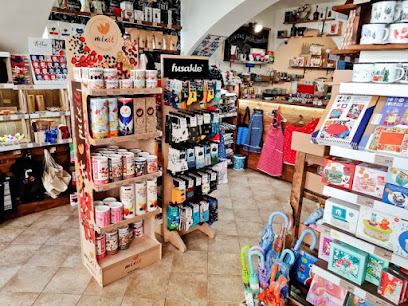
Obchod Čarovňa
Explore Obchod Čarovňa in Banská Bystrica, a tea and coffee store with a delightful selection and inviting ambiance.
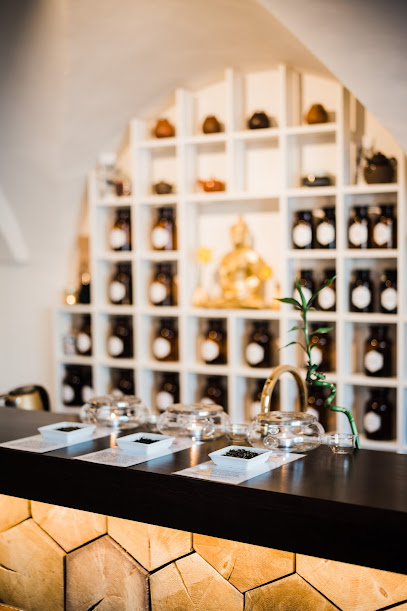
Vape-House.sk
Explore the vibrant world of vaping at Vape-House.sk, Banská Bystrica's premier vaporizer store offering high-quality products and friendly service.
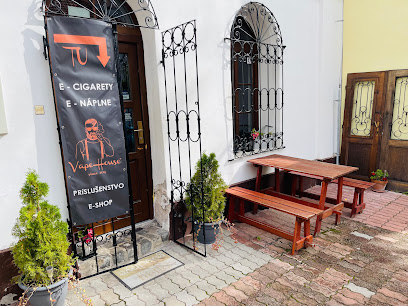
Fonotéka - BBZOO - Vinyl Record Store - Bazár gramoplatní
Explore the vibrant world of vinyl at Fonotéka - BBZOO, Banská Bystrica's premier destination for music enthusiasts.
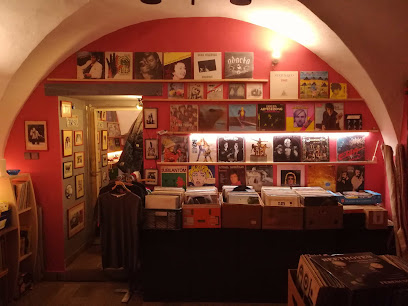
Zlatá Nitka handmade
Discover unique handmade treasures at Zlatá Nitka in Banská Bystrica - the perfect stop for authentic Slovak gifts and souvenirs.
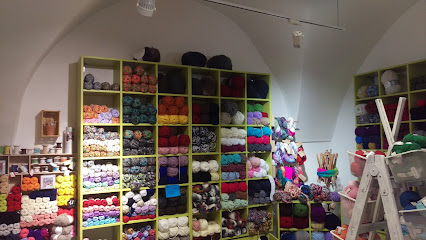
Fun Shop
Explore Fun Shop in Banská Bystrica for unique gifts and local artisan treasures that capture the spirit of Slovakia.

Rosa Slovensko
Explore Rosa Slovensko for a unique selection of Christian literature and music in Banská Bystrica, enriching your spiritual journey.
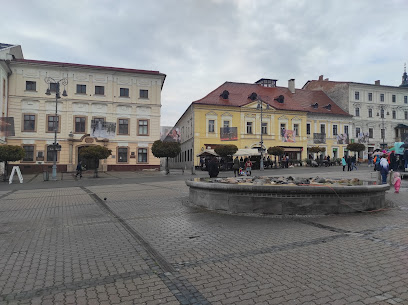
GVEN - šaty, dámske a pánske spoločenské šaty, svadobné oblečenie, stužkové.
Explore GVEN in Banská Bystrica for stunning dresses and stylish formalwear, perfect for any special occasion.
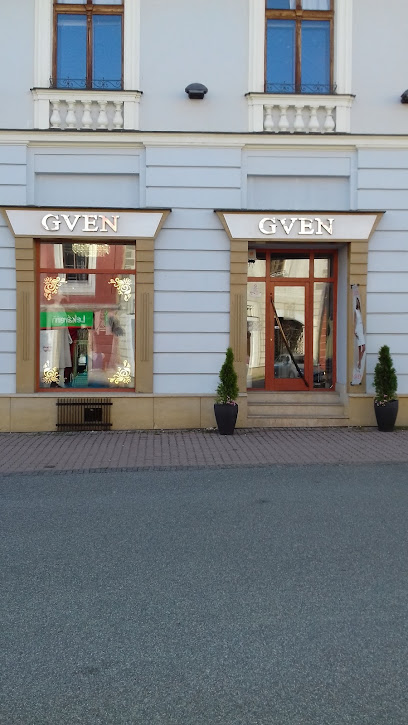
ÚĽUV - The Centre For Folk Art Production
Explore stunning Slovak folk art at ÚĽUV, a center dedicated to preserving traditional craftsmanship and promoting local artisans in Banská Bystrica.
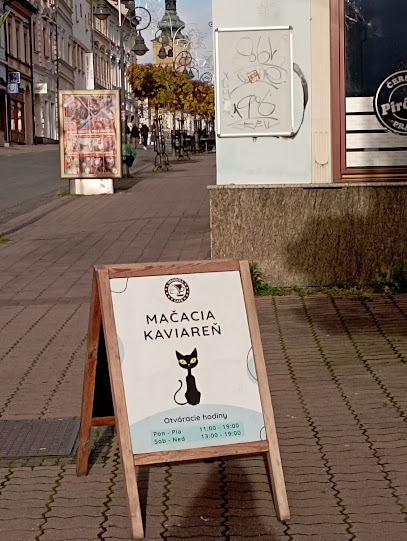
Essential bars & hidden hideouts
Bystrická Klubovňa
Immerse yourself in Banská Bystrica's vibrant brewpub culture at Bystrická Klubovňa, where local craft beers and hearty dishes await.
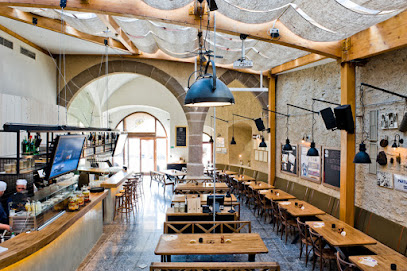
Cartel Coffee Bar & Kitchen
Discover Cartel Coffee Bar & Kitchen in Banská Bystrica - where artisanal coffee meets delectable dining in a vibrant atmosphere.
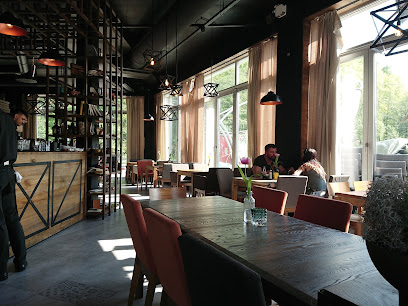
Leroy Bar & Café
Discover the perfect blend of coffee and cocktails at Leroy Bar & Café in Banská Bystrica, a must-visit for tourists seeking local flavor.
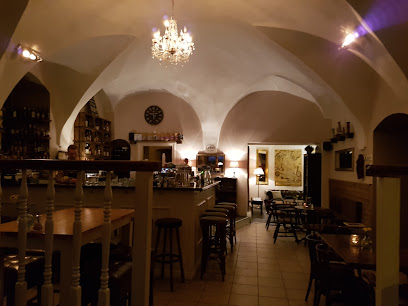
Hawaii Pub
Discover the lively atmosphere of Hawaii Pub, a must-visit brewpub in Banská Bystrica-Radvaň, known for its craft beers and billiards fun.
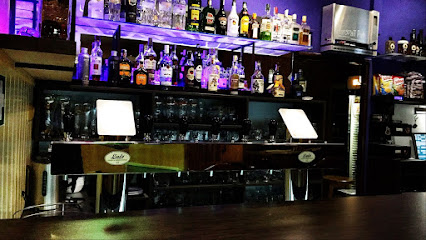
Beniczky cafe & wine bar
Discover the perfect blend of local wines and artisanal coffee at Beniczky Cafe & Wine Bar in Banská Bystrica.
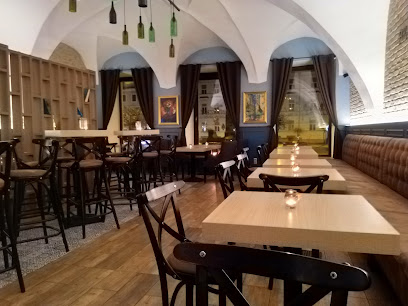
Nautilus Pub - Ponorka
Experience the vibrant nightlife at Nautilus Pub, a lively bar in Banská Bystrica, perfect for drinks and socializing.
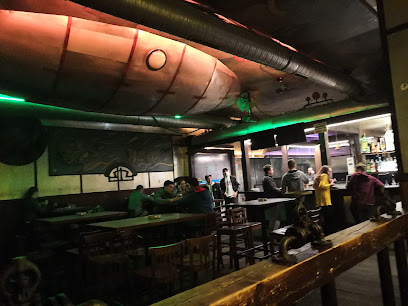
INN Club & Café
Discover the vibrant energy of INN Club & Café, Banská Bystrica's top sports bar for food, drinks, and entertainment.
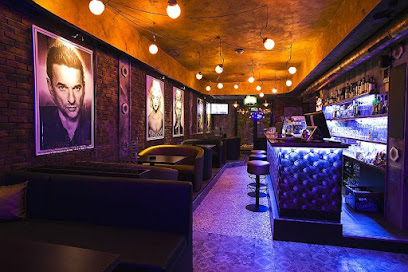
Lobda Bar
Experience the lively ambiance of Lobda Bar in Banská Bystrica, where affordable drinks meet local culture and hospitality.
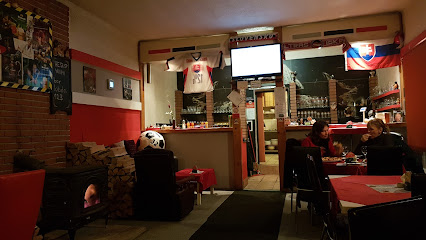
Bystrický Rubín
Discover the vibrant nightlife of Bystrický Rubín in Banská Bystrica, offering a unique blend of local drinks and a lively atmosphere.
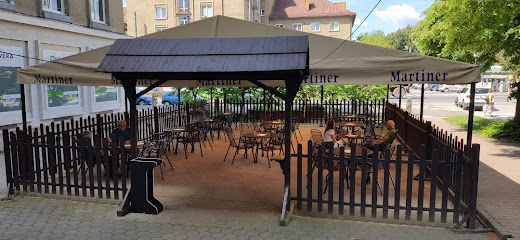
Jazz Art Café Mefisto
Discover the lively atmosphere of Jazz Art Café Mefisto in Banská Bystrica, where live jazz meets delightful local cuisine in an inviting pub setting.
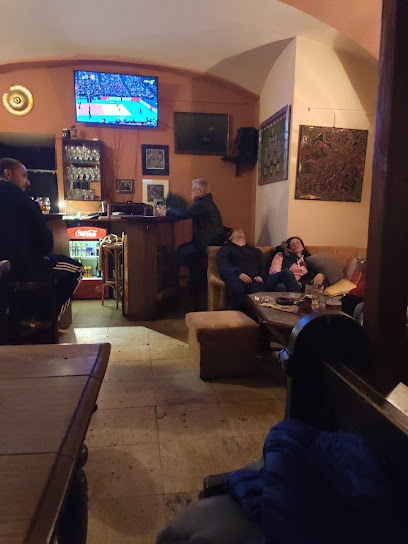
Bystrička
Discover Bystrička: A Charming Pub in Banská Bystrica with Authentic Slovak Brews and a Vibrant Atmosphere.
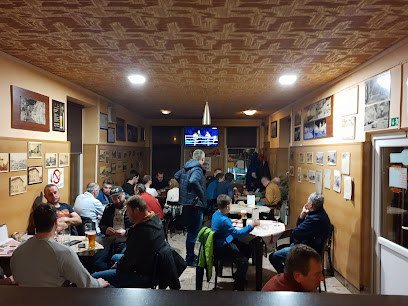
Bistro Pod schodami
Discover the cozy charm of Bistro Pod schodami, a delightful bar in Banská Bystrica offering a diverse beverage selection and a welcoming atmosphere.
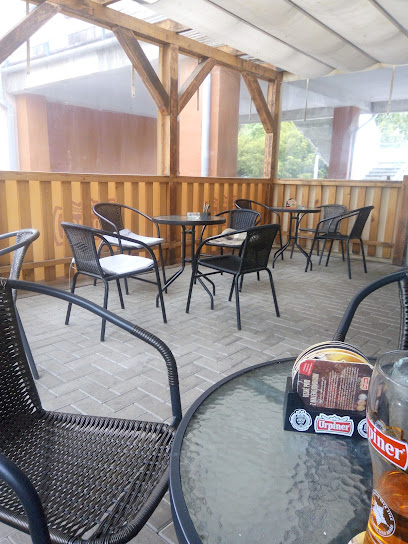
Bar Semafor
Discover the cozy atmosphere of Bar Semafor in Banská Bystrica, where local brews and friendly service meet affordable prices.
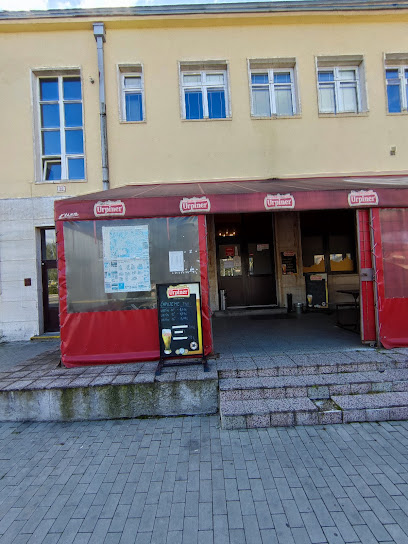
Coctail Bar Bamboo
Discover the vibrant nightlife at Cocktail Bar Bamboo in Banská Bystrica, where expertly crafted cocktails and a lively atmosphere await you.
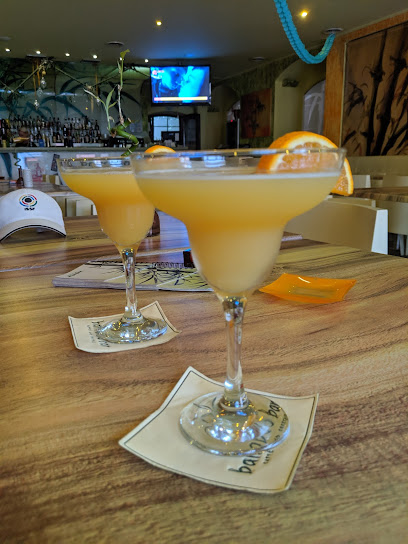
WHY NOT Wine & Food Bar
Discover a culinary delight at WHY NOT Wine & Food Bar in Banská Bystrica, featuring exquisite wines, delicious tapas, and aromatic espresso.
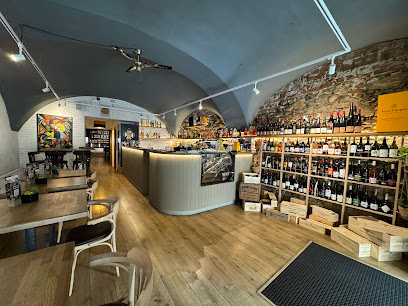
Local Phrases
-
- HelloAhoj
[ahoy] - GoodbyeDovidenia
[doh-viden-ya] - YesÁno
[ah-no] - NoNie
[nye] - Please/You're welcomeProsím
[pro-seem] - Thank youĎakujem
[dya-koo-yem] - Excuse me/SorryPrepáčte
[preh-paach-teh] - How are you?Ako sa máš?
[ah-ko sa mash] - Fine. And you?V pohode. A ty?
[v poh-ode. ah tee] - Do you speak English?Hovoríte po anglicky?
[ho-vo-ree-teh po ahn-gleet-skee] - I don't understandNerozumiem
[neh-ro-zoo-myem]
- HelloAhoj
-
- I'd like to see the menu, pleaseChcel by som si pozrieť jedálny lístok, prosím
[kh-tsel bi som see po-zrye-tye ye-dahl-nee lees-tok pro-seem] - I don't eat meatNemám rád mäso
[ne-mam raad mah-so] - Cheers!Na zdravie!
[na zdraa-vee-ye] - I would like to pay, pleaseChcel by som zaplatiť, prosím
[kh-tsel bi som zap-la-teet pro-seem]
- I'd like to see the menu, pleaseChcel by som si pozrieť jedálny lístok, prosím
-
- Help!Pomoc!
[po-mots] - Go away!Choď preč!
[khoy prech] - Call the Police!Zavolajte políciu!
[za-vo-la-yte po-lee-tsyoo] - Call a doctor!Zavolajte lekára!
[za-vo-la-yte le-kaa-ra] - I'm lostStratil som sa
[stra-teel som sa] - I'm illSom chorý
[som kho-ree]
- Help!Pomoc!
-
- I'd like to buy...Chcel by som kúpiť...
[kh-tsel bi som koo-peet] - I'm just lookingLen sa pozerám
[len sa po-ze-ram] - How much is it?Koľko to stojí?
[kol-ko to stoy-ee] - That's too expensiveTo je príliš drahé
[to ye pree-lish drah-heh] - Can you lower the price?Môžete znížiť cenu?
[moh-zhe-te znee-zheet tse-nu]
- I'd like to buy...Chcel by som kúpiť...
-
- What time is it?Koľko je hodín?
[kol-ko ye ho-deen] - It's one o'clockJe jedna hodina
[ye yed-na ho-dee-na] - Half past (10)Polovica desiatej
[po-lo-vee-tsa de-sya-tey] - MorningRáno
[raa-no] - AfternoonPopoludní
[po-po-loo-dnee] - EveningVečer
[ve-cher] - YesterdayVčera
[v-che-ra] - TodayDnes
[dnes] - TomorrowZajtra
[zai-tra] - 1Jeden
[ye-den] - 2Dva
[dva] - 3Tri
[tree] - 4Štyri
[shtee-ree] - 5Päť
[pyat] - 6Šesť
[shest] - 7Sedem
[se-dem] - 8Osem
[o-sem] - 9Deväť
[de-vyat] - 10Desať
[de-syat]
- What time is it?Koľko je hodín?
-
- Where's a/the...?Kde je...
[kde ye] - What's the address?Aká je adresa?
[aa-ka ye ad-re-sa] - Can you show me (on the map)?Môžete mi to ukázať (na mape)?
[moh-zhe-te mee to ooh-kah-zaht (na ma-pe)] - When's the next (bus)?Kedy je ďalší (autobus)?
[keh-dee ye dyaal-shee au-to-boos] - A ticket (to ....)Lístok (do ....)
[lees-tok do]
- Where's a/the...?Kde je...
History of Banská Bystrica
-
Banská Bystrica's origins date back to the 13th century, when it was established as a mining settlement. The discovery of rich deposits of copper, silver, and gold attracted settlers and miners from all over Europe, turning the town into a bustling medieval center.
-
The 14th and 15th centuries marked the golden age of mining in Banská Bystrica. The town became one of the most important mining centers in the Kingdom of Hungary. The prosperity brought by mining led to the construction of impressive Gothic and Renaissance buildings, many of which still stand today.
-
During the 16th and 17th centuries, Banská Bystrica faced numerous threats from Turkish invasions. In response, the town fortified itself with walls and bastions. These fortifications, some of which can still be seen, were crucial in protecting the town from Ottoman forces.
-
Banská Bystrica played a pivotal role in the Slovak National Uprising against Nazi occupation in 1944. The town served as the headquarters for the Slovak resistance movement. The Museum of the Slovak National Uprising, located in Banská Bystrica, commemorates this significant event in Slovak history.
-
After World War II, Banská Bystrica underwent significant industrial and urban development. New factories, residential areas, and cultural institutions were established, transforming the town into a modern city while preserving its historical charm.
-
Banská Bystrica boasts a rich cultural heritage, with numerous festivals, museums, and galleries. The town is known for its vibrant arts scene, including the annual Radvaň Fair, a tradition dating back to the 17th century, showcasing local crafts, food, and folklore.
Banská Bystrica Essentials
-
Banská Bystrica is centrally located in Slovakia, making it accessible from various points. The nearest international airport is in Bratislava, the capital city, about 215 kilometers away. Alternatively, you can fly into Vienna International Airport and take a train or bus to Banská Bystrica. From both airports, you can catch a train or a long-distance bus. Train travel is particularly popular, with regular services connecting Banská Bystrica to major Slovak cities such as Bratislava, Košice, and Žilina. Buses are also a convenient option, with several daily routes operated by Slovak Lines and other regional bus companies.
-
Once in Banská Bystrica, getting around is straightforward. The city has an efficient public transport system consisting of buses and trolleybuses that connect different parts of the city. Tickets can be purchased at kiosks or directly from the driver. Taxis are readily available and relatively affordable, but it's recommended to use reputable taxi services or apps like Bolt. For those who prefer driving, car rental services are also available. The city center is quite walkable, and many of the main attractions are within walking distance.
-
The official currency of Slovakia is the Euro (EUR). Credit and debit cards are widely accepted in hotels, restaurants, and shops, but it's advisable to carry some cash for smaller establishments and markets. ATMs are plentiful throughout Banská Bystrica, and you can easily withdraw Euros using international cards. Currency exchange services are also available in banks and exchange offices.
-
Banská Bystrica is generally a safe city for tourists. However, like any other place, it's important to take standard precautions. Avoid poorly lit areas at night and be cautious with your belongings in crowded places. While there are no specific high-crime areas targeting tourists, staying vigilant and aware of your surroundings is always a good practice.
-
In case of emergency, dial 112 for immediate assistance, which covers police, fire, and medical emergencies. Banská Bystrica has several hospitals and medical facilities that provide quality care. Pharmacies are also available for minor health issues and over-the-counter medicines. It is advisable to have travel insurance that covers medical emergencies.
-
Fashion: Do dress comfortably but modestly. Avoid overly revealing clothing, especially when visiting religious sites. Religion: Do respect local customs, such as covering your head when entering churches. Public Transport: Do be courteous and offer your seat to elderly passengers. Don't eat or drink on public transport. Greetings: Do greet people with a handshake and maintain eye contact. A friendly 'Dobrý deň' (Good day) is appreciated. Eating & Drinking: Do try local dishes and beverages. Don't refuse food or drink offered by locals, as it can be considered impolite.
-
To experience Banská Bystrica like a local, visit the local markets such as the Central Market where you can buy fresh produce and traditional Slovak goods. Engage with locals; they are often friendly and willing to share stories about the city's history and culture. Don't miss the opportunity to explore the surrounding nature, including the Low Tatras and the Slovak Ore Mountains, which offer excellent hiking and outdoor activities. Visiting historical sites like the SNP Museum, which details the Slovak National Uprising, provides deep insights into the region's past.
Trending Landmark in Banská Bystrica
Nearby Cities to Banská Bystrica
-
Things To Do in Martin
-
Things To Do in Žilina
-
Things To Do in Trenčín
-
Things To Do in Zakopane
-
Things To Do in Salgotarjan
-
Things To Do in Poprad
-
Things To Do in Vac
-
Things To Do in Bielsko-Biala
-
Things To Do in Trnava
-
Things To Do in Eger
-
Things To Do in Ostrava
-
Things To Do in Budapest
-
Things To Do in Miskolc
-
Things To Do in Tatabanya
-
Things To Do in Košice











